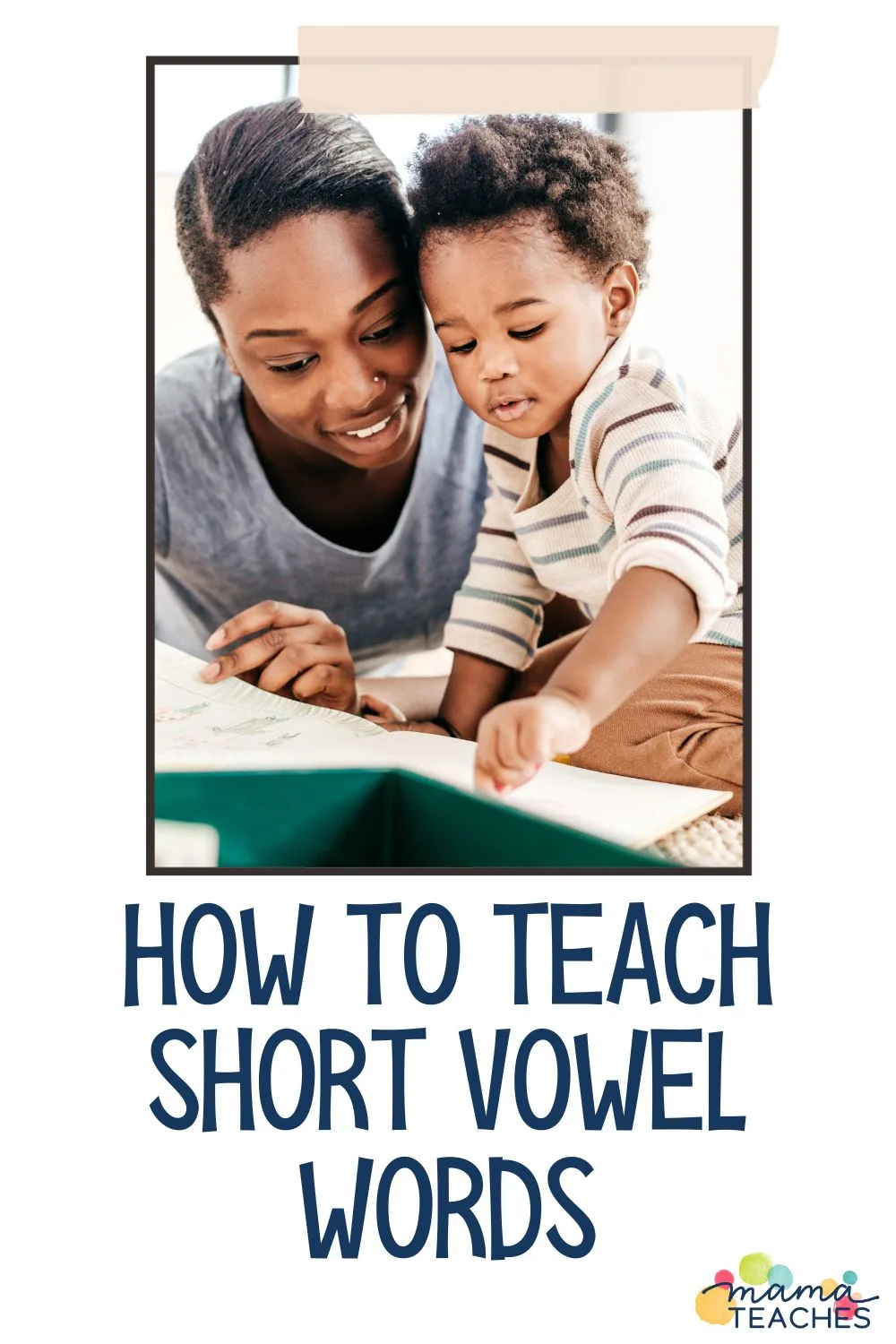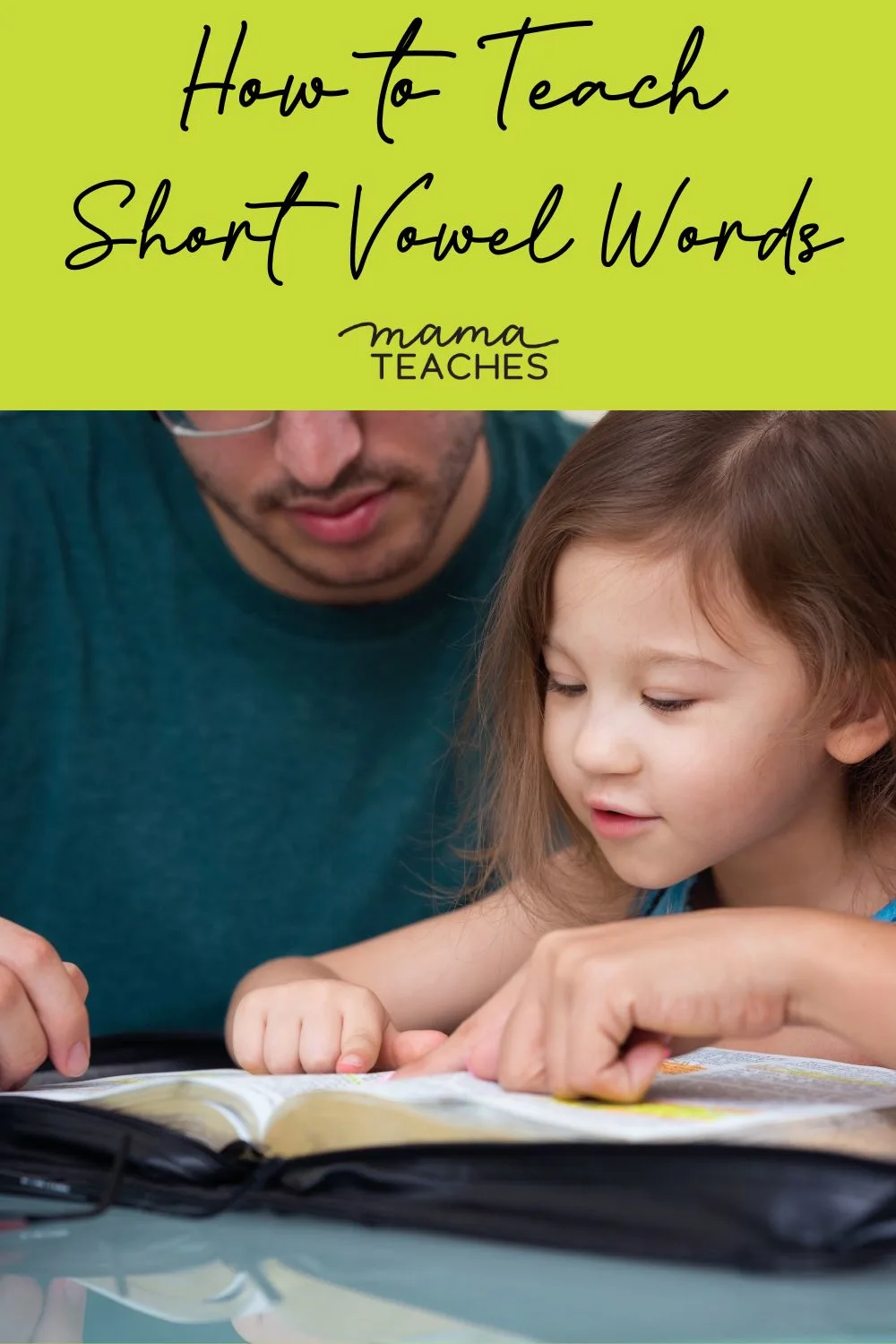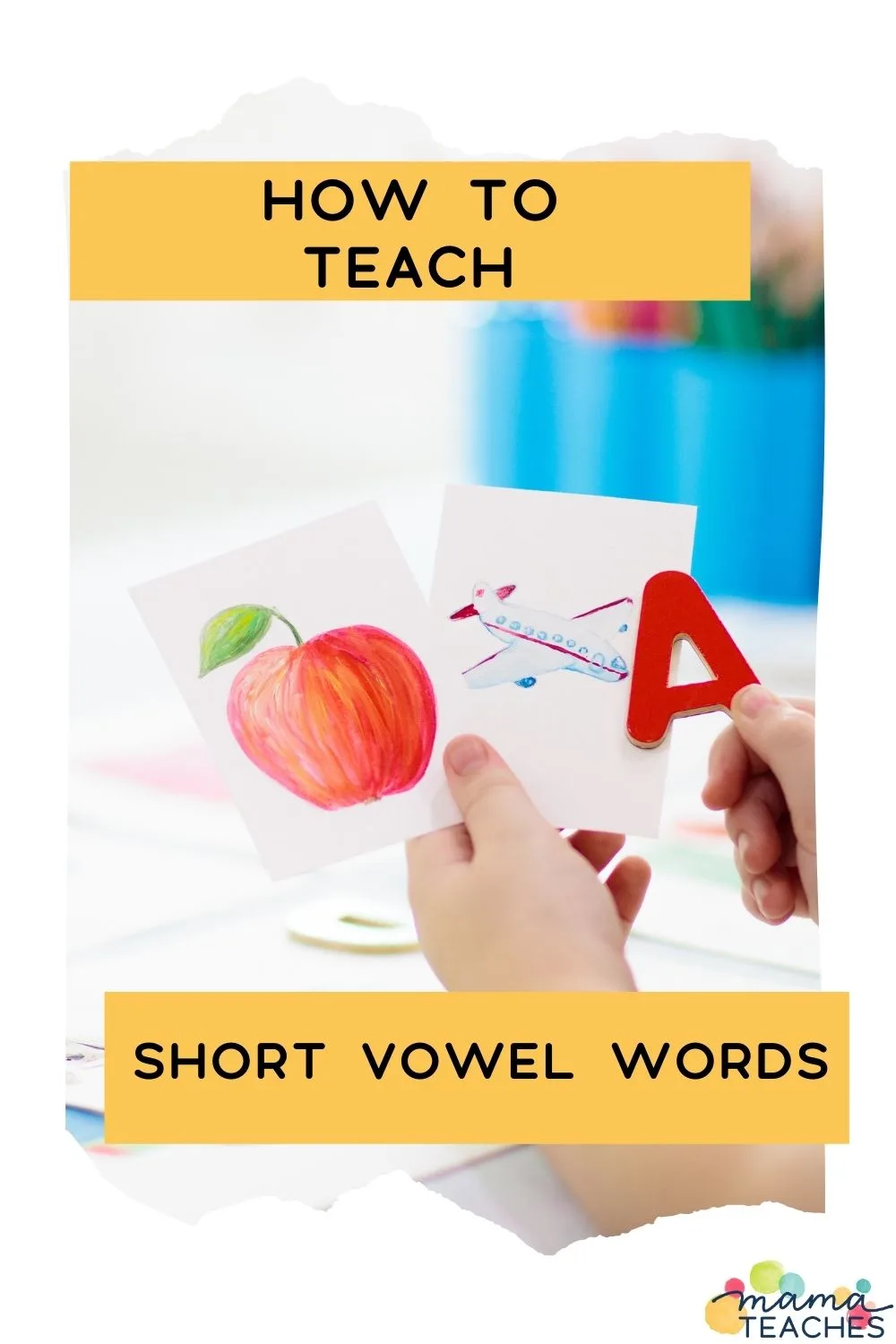Is your young reader ready to sound out short vowel words? Here’s how to teach them from A to Z.

Teaching Short Vowel Words
When teaching someone to read, you start by teaching them the letters.
Then, you teach them the sounds those letters represent.
After that, the fledgling reader is ready to tackle actual words.
The first words a person learns to read are typically short vowel words.

This article contains affiliate links to things that you might like.
What Are Short Vowel Words?
Short vowel words have the short sounds of the vowels:
- The sound of a in “apple”
- The sound of e in “egg”
- The sound of i in “igloo”
- The sounds of o in “odd”
- The sound of u in “up”
Many words have short vowel sounds, but the simplest variety (and, therefore, the words you use for beginning readers) are called CVC words.
CVC stands for “consonant, vowel, consonant.” It refers to the pattern of letters in the word.
CVC words are always three letters long and have the vowel in the middle. The vowel stands for the short vowel sound.
Here are some short vowel words that follow the CVC pattern: fan, beg, sit, pop, and yum.

How to Teach Short Vowel Words
Let’s start at the very beginning.
Teach the Vowels and their Short Vowel Sounds
This may sound obvious, but it is a necessary first step.
You cannot move on to short vowel CVC words until the beginning reader can recognize the vowels by sight (a, e, i, o, and u) and know they are “the vowels.”
Vowels are the letter sounds you can make from your vocal cords alone (and with an open mouth). For example, you don’t need your lips, tongue, or teeth to say “aaaaaa.”
You can teach the vowel letters using blocks, tiles, flashcards, foam letters, or letter magnets.
You can teach the sounds through repetition, poems, songs, or chants.
Practice Recognition by Sight
Once a beginning reader knows the vowels and their sounds, see if they can recognize them in context.
Write some short vowel CVC words on index cards, one word per card.
Initially, you can make the vowel a different color from the surrounding consonants.
Have the reader sort the cards by their vowel sounds: a pile for a’s, a pile for e’s, etc.

Practice Recognition by Hearing
You can use the same CVC cards for phonemic awareness (hearing the individual sounds of words).
This time, you look at the card (don’t show it to the reader).
Read the card, blending the sounds but elongating the vowel sound. “Bag” becomes “baaaaag.” (It’s the same word; you just lean into the short vowel sound.)
Can the reader tell which vowel sound it is? Have them sort the cards by the sounds of the vowels (using only their hearing).
Use Letter Tiles to Build Words
Three-dimensional letters are an ideal tool for teaching short vowel words.
Initially, young readers learn best from letters they can touch and feel.
Use foam letters, letter tiles, or fridge magnetic letters to form words.
Teach Letter Families
Many short vowel words rhyme. These are called “word families.”
With the 3-D letters, show a word ending like “am.”
Add an initial letter (e.g., add the letter h to make “ham”)
Practice swapping out the initial letters to make new words in the same family (like jam, bam, Pam, and Sam).
Just be sure the words you form are actual words and not jibberish.

Use Simple and Fun Worksheets
Worksheets are a way to make reading more hands-on.
But not all worksheets are as fun as they are effective.
These CVC Short Vowel Words Worksheets are perfect for beginning readers and work well for children with developing fine motor skills.
The worksheets use bold, black print of the right size to attract the attention of a beginning reader.
Next to each CVC word are two pictures. The budding reader decodes the word and then circles the matching picture.
These worksheets are simple to use (just click and print!) and 100% free!
You can find them in our Freebies Library.

Are you not yet a member of our Freebies Library? It’s (of course!) free to join and full of fantastic resources like games, printables, and activities.
Just fill out the form below!
Already a member? Click here to log in!
Play Short Vowel Word Games
Turn reading into a game by matching words to pictures or designing a short vowel words BINGO board.
Use a free online BINGO card generator to create a small board with a CVC word in each space.
Call out the word, and have the reader find the correct word on the BINGO board.
Read Short Vowel Words in a Story
Beginning readers are motivated by reading real books.
Use early readers that focus on CVC words, like the BOB Books.

Incorporate Technology (If You Want)
While technology should not replace in-person instruction, online resources and learning apps can provide reading reinforcement.
Kids love to play on screens, and reading apps motivate children to play and learn at the same time.
If your child already has a tablet (and you are okay with them using it), take advantage of the fun and interactive games and activities for beginning readers.
Differentiate the Instruction
Learning to read is a giant mental leap, and not every child is ready to tackle the process at the same time.
If you are a classroom teacher, use differentiated instruction to approach CVC words.
Some students need to focus on vowel recognition by sight and sound for a bit longer.
Other students may be ready to write CVC words in sentences after only a few weeks.
Remember that everyone learns at their own pace, but all students can learn to read CVC words.
Final Thoughts on Teaching Short Vowel Words
Short vowel words (or CVC words) are the first words a reader learns to decode.
You can make them more approachable with these ten tips on teaching short vowel words.
(And don’t forget to check out all our reading resources–including the Short Vowel Words Worksheets–in the Freebies Library.)
